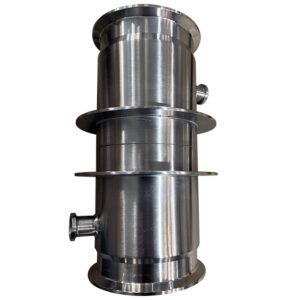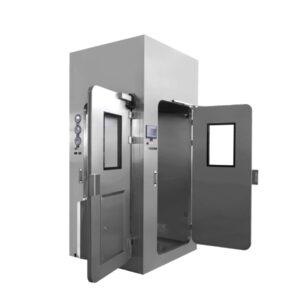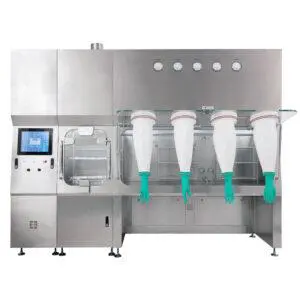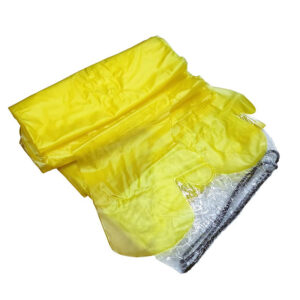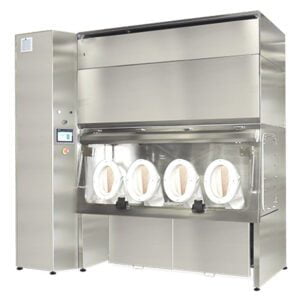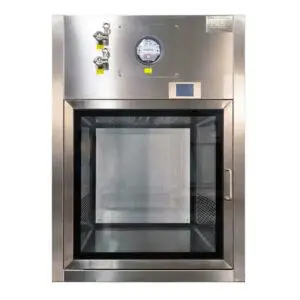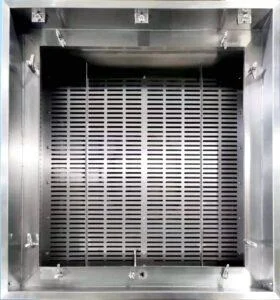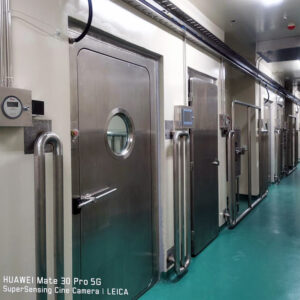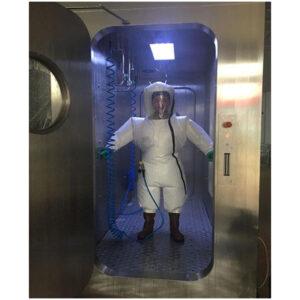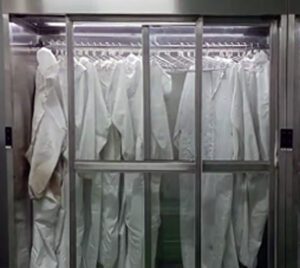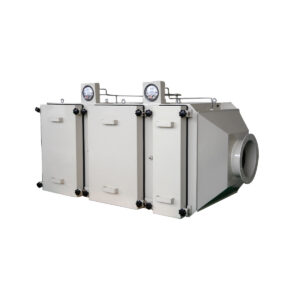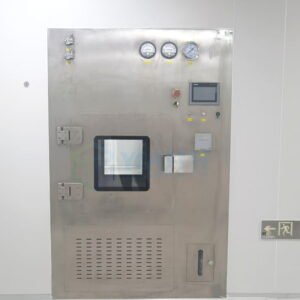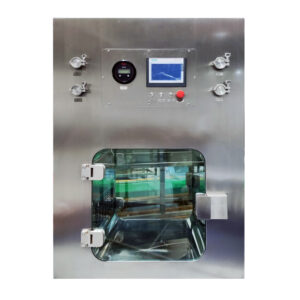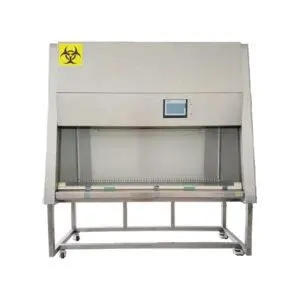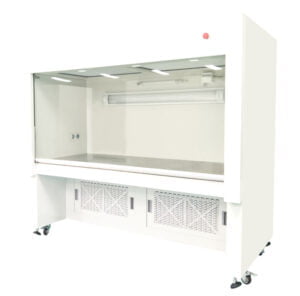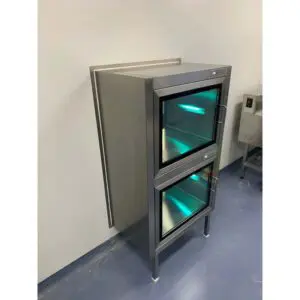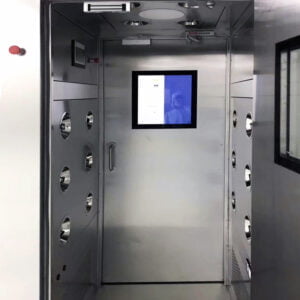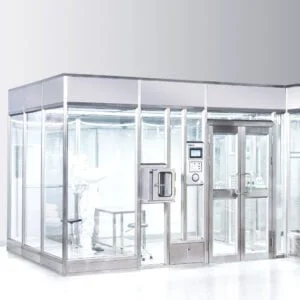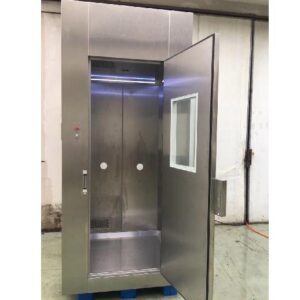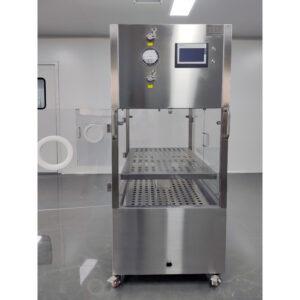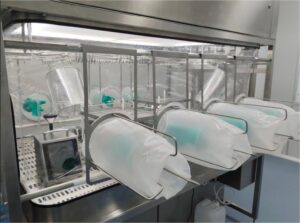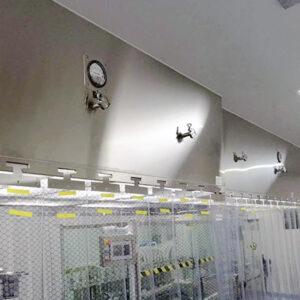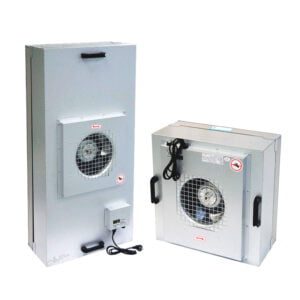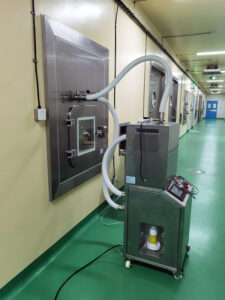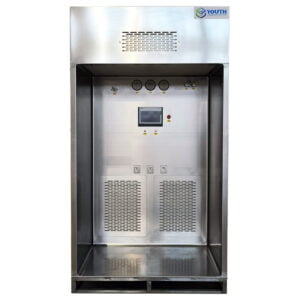Sterility test isolators have become an indispensable tool in the pharmaceutical industry, particularly for ophthalmic product testing. These specialized containment systems provide a controlled environment that ensures the integrity and reliability of sterility tests for eye-related medications and solutions. As the demand for high-quality ophthalmic products continues to grow, the importance of efficient and accurate testing methods cannot be overstated.
In the realm of ophthalmic product development and quality control, sterility test isolators play a crucial role in maintaining the highest standards of safety and efficacy. These isolators offer a range of benefits, including minimizing the risk of contamination, enhancing workflow efficiency, and ensuring compliance with stringent regulatory requirements. From eye drops to contact lens solutions, every ophthalmic product undergoes rigorous testing to guarantee its sterility and suitability for use in the delicate eye area.
As we delve deeper into the world of sterility test isolators for ophthalmic products, we'll explore their design features, operational principles, and the latest advancements in technology. We'll also examine how these isolators contribute to the overall quality assurance process in ophthalmic product manufacturing and discuss their impact on patient safety and product reliability.
Sterility test isolators are essential for ensuring the safety and efficacy of ophthalmic products, providing a controlled environment that minimizes contamination risks and enhances testing accuracy.
What are the key design features of sterility test isolators for ophthalmic products?
Sterility test isolators designed for ophthalmic product testing are highly specialized pieces of equipment that incorporate several key features to ensure optimal performance and reliability. These isolators are engineered to maintain a sterile environment while allowing for efficient and accurate testing procedures.
The primary design elements of these isolators include a sealed chamber, HEPA filtration systems, transfer ports, and glove ports. Each component plays a crucial role in maintaining the integrity of the testing environment and preventing contamination.
One of the most critical aspects of sterility test isolators for ophthalmic products is their ability to maintain a consistent and controlled environment. This is achieved through advanced air handling systems and precise pressure control mechanisms.
Sterility test isolators for ophthalmic products feature a hermetically sealed chamber with HEPA filtration, ensuring a particle-free environment that meets or exceeds ISO 5 (Class 100) cleanliness standards.
| Feature | Function |
|---|---|
| Sealed Chamber | Provides physical barrier against contaminants |
| HEPA Filtration | Removes airborne particles and microorganisms |
| Transfer Ports | Allows safe introduction of materials |
| Glove Ports | Enables operator manipulation without compromising sterility |
The design of sterility test isolators for ophthalmic products also takes into account the specific requirements of eye-related medications. For instance, many isolators are equipped with specialized lighting systems that allow for careful visual inspection of clear solutions and emulsions commonly used in ophthalmic formulations.
In conclusion, the key design features of sterility test isolators for ophthalmic products work in harmony to create an environment that ensures the highest standards of sterility testing. These features not only protect the integrity of the tests but also contribute to the overall quality and safety of ophthalmic products reaching consumers.
How do sterility test isolators improve the accuracy of ophthalmic product testing?
Sterility test isolators significantly enhance the accuracy of ophthalmic product testing by providing a controlled and consistent environment for conducting tests. This improvement in accuracy is crucial for ensuring the safety and efficacy of eye-related medications and solutions.
The primary way isolators improve accuracy is by eliminating variables that could potentially affect test results. By maintaining a sterile environment, these systems reduce the risk of false positives or negatives that could arise from external contamination.
Furthermore, sterility test isolators allow for more precise control over testing parameters such as temperature, humidity, and air quality. This level of control is particularly important for ophthalmic products, which often have specific stability requirements.
Sterility test isolators can reduce the risk of false positive results in ophthalmic product testing by up to 90% compared to traditional open testing methods, significantly improving the reliability of test outcomes.
| Factor | Impact on Accuracy |
|---|---|
| Sterile Environment | Eliminates external contamination |
| Controlled Parameters | Ensures consistent testing conditions |
| Reduced Human Error | Minimizes variability in test procedures |
| Enhanced Reproducibility | Facilitates reliable repeat testing |
The use of YOUTH sterility test isolators also contributes to improved accuracy by standardizing testing procedures. The controlled environment allows for more consistent application of testing protocols, reducing variability between different operators or testing sessions.
In conclusion, sterility test isolators play a vital role in improving the accuracy of ophthalmic product testing. By providing a controlled, contamination-free environment and standardizing procedures, these systems ensure that test results are reliable and reproducible, ultimately contributing to the safety and efficacy of ophthalmic products.
What are the regulatory requirements for using sterility test isolators in ophthalmic product testing?
Regulatory requirements for using sterility test isolators in ophthalmic product testing are stringent and comprehensive, reflecting the critical nature of ensuring eye product safety. These requirements are set by various regulatory bodies, including the FDA, EMA, and other international health authorities.
Key regulatory aspects include validation of the isolator system, qualification of operators, and adherence to good manufacturing practices (GMP). Manufacturers must demonstrate that their isolator systems consistently maintain the required sterile conditions and perform as intended.
Documentation is a crucial component of regulatory compliance. Detailed records of isolator performance, maintenance, and testing procedures must be maintained and readily available for inspection.
FDA guidelines require that sterility test isolators used for ophthalmic product testing undergo a rigorous validation process, including a minimum of three consecutive successful media fills to demonstrate the system's ability to maintain sterility.
| Regulatory Aspect | Requirement |
|---|---|
| Validation | Initial and ongoing system performance verification |
| Operator Training | Documented qualification of personnel |
| Environmental Monitoring | Regular testing of air quality and surface sterility |
| Maintenance | Scheduled upkeep and calibration of isolator components |
Compliance with these regulatory requirements is essential for manufacturers using sterility test isolators in ophthalmic product testing. The Ophthalmic product testing process must be thoroughly documented and validated to ensure it meets all necessary standards.
In conclusion, the regulatory requirements for using sterility test isolators in ophthalmic product testing are designed to ensure the highest levels of product safety and efficacy. By adhering to these stringent guidelines, manufacturers can confidently produce ophthalmic products that meet global quality standards and regulatory expectations.
How do sterility test isolators contribute to maintaining product integrity during testing?
Sterility test isolators play a crucial role in maintaining the integrity of ophthalmic products throughout the testing process. These sophisticated systems create a barrier between the product and potential sources of contamination, ensuring that the sterility of the product is not compromised during testing.
One of the primary ways isolators contribute to product integrity is by providing a controlled environment that minimizes the risk of microbial contamination. This is particularly important for ophthalmic products, which are highly susceptible to contamination and must remain sterile to prevent eye infections.
Moreover, sterility test isolators allow for aseptic handling of products, reducing the risk of contamination from human operators. This is achieved through the use of glove ports and specialized transfer systems that maintain the sterile barrier while allowing for necessary manipulations.
Studies have shown that the use of sterility test isolators can reduce the risk of product contamination during testing by up to 99.9% compared to traditional open testing methods, significantly enhancing product integrity.
| Feature | Contribution to Product Integrity |
|---|---|
| HEPA Filtration | Removes airborne contaminants |
| Positive Pressure | Prevents ingress of external particles |
| Aseptic Transfer Systems | Allows safe introduction of materials |
| Continuous Monitoring | Ensures consistent environmental conditions |
The use of sterility test isolators also contributes to maintaining product integrity by allowing for more consistent and reproducible testing conditions. This consistency is crucial for ensuring that test results accurately reflect the true sterility status of the product.
In conclusion, sterility test isolators are instrumental in maintaining the integrity of ophthalmic products during testing. By providing a controlled, contamination-free environment and enabling aseptic handling, these systems ensure that products remain sterile throughout the testing process, ultimately contributing to the safety and efficacy of ophthalmic medications.
What are the latest technological advancements in sterility test isolators for ophthalmic products?
The field of sterility test isolators for ophthalmic products has seen significant technological advancements in recent years, driven by the need for increased efficiency, accuracy, and reliability in testing procedures. These innovations have revolutionized the way ophthalmic products are tested and have contributed to improved product quality and safety.
One of the most notable advancements is the integration of automated systems within isolators. These automated systems can handle various aspects of the testing process, from sample preparation to test execution, reducing the need for human intervention and minimizing the risk of contamination.
Another significant development is the incorporation of real-time monitoring and data logging capabilities. These features allow for continuous tracking of environmental conditions within the isolator, ensuring that any deviations from ideal parameters are immediately detected and addressed.
Advanced sterility test isolators now incorporate AI-powered predictive maintenance systems, which can reduce unplanned downtime by up to 50% and extend the operational lifespan of the equipment by 20-30%.
| Technological Advancement | Benefit |
|---|---|
| Automated Sample Handling | Reduces human error and contamination risk |
| Real-time Monitoring | Ensures consistent environmental conditions |
| AI-powered Predictive Maintenance | Minimizes downtime and extends equipment life |
| Enhanced Filtration Systems | Improves air quality and particulate removal |
The development of more efficient decontamination systems is another area of technological advancement in sterility test isolators. Rapid gassing systems and advanced UV sterilization techniques have significantly reduced the time required for isolator decontamination between testing cycles.
In conclusion, the latest technological advancements in sterility test isolators for ophthalmic products have greatly enhanced the efficiency, reliability, and accuracy of testing procedures. These innovations not only improve the quality of test results but also contribute to the overall safety and efficacy of ophthalmic products, ultimately benefiting both manufacturers and patients.
How do sterility test isolators compare to traditional cleanroom environments for ophthalmic product testing?
Sterility test isolators and traditional cleanroom environments both play important roles in ophthalmic product testing, but they differ significantly in their approach to maintaining sterility and facilitating testing procedures. Understanding these differences is crucial for manufacturers in deciding which method is most appropriate for their specific testing needs.
Sterility test isolators provide a more contained and controlled environment compared to traditional cleanrooms. They offer a higher level of sterility assurance by creating a physical barrier between the testing area and the external environment, which is particularly beneficial for sensitive ophthalmic products.
In terms of efficiency, isolators often have the edge over cleanrooms. They require less space, consume less energy, and can be more easily validated due to their self-contained nature. This can lead to significant cost savings over time, especially for facilities with high testing volumes.
Studies have shown that sterility test isolators can reduce operating costs by up to 65% compared to traditional cleanroom environments of equivalent cleanliness levels, while also providing superior contamination control.
| Factor | Sterility Test Isolators | Traditional Cleanrooms |
|---|---|---|
| Space Requirement | Minimal | Extensive |
| Energy Consumption | Lower | Higher |
| Sterility Assurance | Very High | High |
| Operational Flexibility | Limited | Greater |
| Initial Investment | Higher | Lower |
While isolators offer many advantages, traditional cleanrooms still have their place in ophthalmic product testing. They provide greater flexibility for large-scale operations and can accommodate a wider range of testing procedures. However, they require more rigorous personnel gowning procedures and environmental monitoring.
In conclusion, while both sterility test isolators and traditional cleanrooms have their merits, isolators generally offer superior sterility assurance and cost-efficiency for ophthalmic product testing. The choice between the two depends on factors such as the specific testing requirements, facility constraints, and long-term operational considerations.
What are the best practices for maintaining and operating sterility test isolators in ophthalmic product testing?
Maintaining and operating sterility test isolators for ophthalmic product testing requires adherence to strict protocols and best practices to ensure consistent performance and reliable results. These practices are essential for preserving the integrity of the testing environment and, by extension, the safety of ophthalmic products.
Regular maintenance is a cornerstone of proper isolator operation. This includes routine inspections, cleaning, and calibration of all components. Particular attention should be paid to critical elements such as HEPA filters, glove ports, and transfer systems, which are crucial for maintaining the sterile barrier.
Operator training is another vital aspect of best practices. Personnel must be thoroughly trained in aseptic techniques, isolator operation, and emergency procedures. Regular retraining and competency assessments help ensure that operators maintain the necessary skills and knowledge.
Implementing a comprehensive preventive maintenance program for sterility test isolators can reduce the risk of critical failures by up to 80% and extend the operational life of the equipment by 3-5 years.
| Best Practice | Description |
|---|---|
| Regular Maintenance | Scheduled inspections and servicing of all components |
| Operator Training | Comprehensive initial and ongoing training programs |
| Environmental Monitoring | Continuous tracking of air quality and particle counts |
| Documentation | Detailed record-keeping of all operations and maintenance activities |
| Validation | Periodic revalidation of isolator performance |
Proper decontamination procedures are crucial for maintaining the sterility of the isolator. This includes following manufacturer-recommended protocols for cleaning and sterilization, as well as validating the effectiveness of these procedures through regular microbial testing.
In conclusion, adhering to best practices for maintaining and operating sterility test isolators is crucial for ensuring the reliability and accuracy of ophthalmic product testing. By implementing rigorous maintenance schedules, comprehensive training programs, and strict operational protocols, manufacturers can maximize the performance of their isolators and maintain the highest standards of product safety and quality.
What future developments can we expect in sterility test isolators for ophthalmic products?
The future of sterility test isolators for ophthalmic products is poised for exciting developments that promise to further enhance efficiency, accuracy, and reliability in testing procedures. As technology continues to advance and regulatory requirements evolve, we can anticipate several key areas of innovation in the coming years.
One of the most promising areas of development is the integration of artificial intelligence (AI) and machine learning algorithms into isolator systems. These technologies have the potential to optimize testing processes, predict maintenance needs, and even assist in the interpretation of test results, leading to more efficient and accurate testing procedures.
Another area of future development is the improvement of isolator designs to enhance ergonomics and ease of use. This could include advancements in glove port technology, more intuitive user interfaces, and improved systems for material transfer that minimize the risk of contamination while maximizing efficiency.
Industry experts predict that by 2025, over 75% of new sterility test isolators for ophthalmic products will incorporate some form of AI or machine learning technology, significantly improving testing efficiency and accuracy.
| Future Development | Potential Impact |
|---|---|
| AI Integration | Enhanced process optimization and predictive maintenance |
| Improved Ergonomics | Increased operator comfort and efficiency |
| Advanced Filtration | Better particulate control and air quality |
| Rapid Decontamination | Faster turnaround times between testing cycles |
| Integrated Analytics | Real-time data analysis and reporting |
We can also expect to see advancements in rapid microbial detection technologies that could be integrated into isolator systems. These developments could potentially reduce testing times and provide more immediate feedback on product sterility, allowing for quicker release of ophthalmic products to market.
In conclusion, the future of sterility test isolators for ophthalmic products looks bright, with developments aimed at improving efficiency, accuracy, and user experience. As these technologies continue to evolve, we can expect to see even more sophisticated and reliable testing systems that will contribute to the production of safer and higher-quality ophthalmic products.
In conclusion, sterility test isolators have revolutionized the field of ophthalmic product testing, providing a level of control and assurance that is unmatched by traditional testing methods. These sophisticated systems offer numerous benefits, from improved accuracy and reduced contamination risk to enhanced efficiency and cost-effectiveness in the long run.
Throughout this article, we've explored the key design features of sterility test isolators, their regulatory requirements, and their crucial role in maintaining product integrity during testing. We've also examined how these isolators compare to traditional cleanroom environments and discussed best practices for their operation and maintenance.
The technological advancements in sterility test isolators, such as automation, real-time monitoring, and AI integration, are paving the way for even more efficient and reliable testing procedures. As we look to the future, we can expect further innovations that will continue to enhance the safety and quality of ophthalmic products.
Ultimately, the use of sterility test isolators in ophthalmic product testing is not just about meeting regulatory requirements—it's about ensuring the highest standards of safety and efficacy for products that directly impact eye health. As the pharmaceutical industry continues to evolve, these isolators will undoubtedly play an increasingly important role in safeguarding the quality of ophthalmic products and, by extension, the health of patients worldwide.
External Resources
Ophthalmological Testing: Claim Substantiation Guide – CPT Labs – This guide outlines the tiered approaches to ophthalmological testing, including toxicological profiling, in vitro and ex vivo tests, and clinical assessments to ensure the safety of ophthalmic products.
Product Quality Testing for Topical Ophthalmic Suspension Products – This video discusses formulation development considerations for ophthalmic suspension products, emphasizing the importance of particle size, pH, and the presence of preservatives and stabilizers in ensuring product safety and efficacy.
Opthalmics Packaging Tests – Nelson Labs – This resource details the testing for extractables and leachables in ophthalmic solutions and suspensions, highlighting the unique considerations and thresholds for these products to ensure safety and regulatory compliance.
Ophthalmic Formulations: Development and Testing – Pharmaceutical Technology – This article provides an overview of the development and testing processes for ophthalmic formulations, including considerations for active ingredients, excipients, and the importance of clinical trials.
Safety Evaluation of Ophthalmic Excipients – Journal of Pharmaceutical Sciences – This scientific article focuses on the safety evaluation of excipients used in ophthalmic products, discussing the importance of toxicological profiling and compatibility testing.
Ophthalmic Drug Product Development: Regulatory Considerations – CDER FDA – This resource from the FDA's Center for Drug Evaluation and Research (CDER) outlines the regulatory considerations and requirements for the development of ophthalmic drug products, including testing and validation procedures.
These resources provide a comprehensive view of the various aspects involved in ophthalmic product testing, from formulation development to regulatory compliance.
Related Contents:
- Medical Device Testing with Sterility Test Isolators
- Compact Sterility Test Isolators for Small Labs
- Custom Sterility Test Isolators: Top 5 Designs 2025
- Sterile Antibiotic Testing: Isolator Techniques
- Environmental Monitoring in Sterility Test Isolators
- Sterility Test Isolators for Pharma Quality Control
- Flexible Wall Isolators: Cost-Effective Sterility Testing
- Glove Sterility Test Isolators: Essential Guide 2025
- Half-Suit Sterility Test Isolators: Ergonomic Design
